STM32F030C6T6 vs STM32F072C8T6 STMicroelectronics Microcontrollers
32KB 32K x 8 FLASH ARM® Cortex®-M0 32-Bit Microcontroller STM32F0 Series STM32F03 48 Pin 48MHz 3.3V 48-LQFP









32KB 32K x 8 FLASH ARM® Cortex®-M0 32-Bit Microcontroller STM32F0 Series STM32F03 48 Pin 48MHz 3.3V 48-LQFP
Compare STM32F030C6T6 and STM32F072C8T6 for consumer electronics. Discover which microcontroller suits your project based on cost, features, and power efficiency.
Product Introduction
Choosing the right microcontroller can make or break your consumer electronics project. When comparing the STM32F030C6T6 and STM32F072C8T6, you’ll notice distinct advantages in processing power, peripheral support, and power efficiency. For example, applications requiring fast data handling benefit from higher processing speeds, while low-power designs demand energy-efficient operation. The STM32F030C6T6 excels in cost-sensitive projects, while the STM32F072C8T6 offers better peripheral connectivity for feature-rich devices. By understanding your project’s needs, you ensure optimal performance and cost-effectiveness.
Overview of STM32F030C6T6
Key Features and Specifications
The STM32F030C6T6 microcontroller is built on the ARM Cortex-M0 architecture, offering reliable performance for cost-sensitive designs. It operates at a maximum frequency of 48 MHz, ensuring smooth execution of embedded tasks. With 32 KB of program memory and 4 KB of RAM, it supports moderate complexity in applications.
This microcontroller includes versatile peripherals, such as up to six USARTs for serial communication and two SPI interfaces for data transfer. Its 12-bit ADC with up to 16 channels enables precise analog-to-digital conversion, making it ideal for sensor-based systems. Additionally, it provides 11 timers, including advanced-control and watchdog timers, to manage time-sensitive operations effectively.
Here’s a summary of its specifications:
| Specification | Details |
|---|---|
| Core | Arm® 32-bit Cortex®-M0 CPU |
| Frequency | Up to 48 MHz |
| Flash Memory | 16 to 256 Kbytes |
| SRAM | 4 to 32 Kbytes with HW parity |
| Power Supply | VDD = 2.4 V to 3.6 V |
| Low Power Modes | Sleep, Stop, Standby |
| I/O Pins | Up to 55 fast I/Os |
| ADC | One 12-bit, 1.0 µs ADC (up to 16 channels) |
| Communication Interfaces | Up to two I2C, up to six USARTs, up to two SPIs |
| Timers | 11 timers including advanced-control and watchdog timers |
Strengths in Consumer Electronics Applications
The STM32F030C6T6 excels in applications where cost and simplicity are key priorities. Its low power modes, such as Sleep and Standby, make it suitable for battery-powered devices like remote controls and wearables. The high-speed ADC ensures accurate data collection from sensors, which is essential for smart home devices.
Its compact LQFP-48 package and 48 pins allow easy integration into space-constrained designs. The microcontroller’s robust communication interfaces, including USART and SPI, enable seamless connectivity with external modules like displays or wireless transceivers. These features make it a strong candidate for consumer electronics requiring basic functionality without compromising reliability.
Limitations
While the STM32F030C6T6 offers solid performance for its price, it has limitations that may affect your selection for feature-rich designs. The 4 KB of RAM restricts its ability to handle memory-intensive tasks, such as advanced graphics or large data buffers. Its Cortex-M0 core lacks the processing power needed for high-speed computations or complex algorithms.
Additionally, the absence of USB support limits its use in devices requiring direct computer connectivity. If your project demands extensive peripheral support or higher computational capabilities, you may need to consider alternatives like the STM32F072C8T6.
Overview of STM32F072C8T6
Key Features and Specifications
The STM32F072C8T6 is a versatile microcontroller built on the ARM Cortex-M0 core. It operates at a clock speed of up to 48 MHz, delivering reliable performance for a wide range of applications. With 64 KB of flash memory and 16 KB of RAM, it supports more complex tasks compared to the STM32F030C6T6.
This microcontroller stands out with its integrated USB 2.0 full-speed interface, which simplifies connectivity with computers and other USB-enabled devices. It also features a 12-bit ADC with up to 16 channels, allowing precise data acquisition from multiple sensors. The STM32F072C8T6 includes advanced communication interfaces like CAN and I2C, making it suitable for systems requiring robust data exchange.
Here’s a quick look at its specifications:
| Specification | Details |
|---|---|
| Core | Arm® 32-bit Cortex®-M0 CPU |
| Frequency | Up to 48 MHz |
| Flash Memory | 64 KB |
| SRAM | 16 KB |
| USB Support | USB 2.0 Full-Speed |
| Communication Interfaces | CAN, I2C, SPI, USART |
| ADC | One 12-bit, 1.0 µs ADC (up to 16 channels) |
| Timers | 11 timers including advanced-control and watchdog timers |
Strengths in Consumer Electronics Applications
The STM32F072C8T6 shines in feature-rich consumer electronics. Its USB support makes it ideal for devices like USB-powered gadgets or data loggers. The additional RAM and flash memory allow it to handle more demanding tasks, such as managing multiple sensors or running complex algorithms.
Its CAN interface is particularly useful for automotive or industrial applications, where reliable communication between devices is critical. The microcontroller’s low power modes, including Sleep and Stop, help extend battery life in portable devices. These features make it a strong choice for smart home systems, medical devices, and advanced wearables.
Limitations
Despite its strengths, the STM32F072C8T6 has some limitations. Its Cortex-M0 core, while efficient, lacks the processing power needed for high-performance applications like real-time video processing. The 16 KB of RAM, though an improvement over the STM32F030C6T6, may still be insufficient for memory-intensive tasks.
Additionally, its cost is higher than the STM32F030C6T6, which might not suit budget-sensitive projects. If your application requires minimal features or prioritizes cost over connectivity, the STM32F030C6T6 might be a better fit.
Head-to-Head Comparison
Performance and Processing Power
When comparing the STM32F030C6T6 and STM32F072C8T6, you’ll notice differences in their ability to handle processing tasks. Both microcontrollers operate at a maximum clock speed of 48 MHz, which ensures reliable performance for most embedded applications. However, the STM32F072C8T6 has an edge due to its larger memory capacity. With 64 KB of flash memory and 16 KB of RAM, it can manage more complex tasks and larger data sets. In contrast, the STM32F030C6T6, with 32 KB of flash memory and 4 KB of RAM, is better suited for simpler designs.
The STM32F072C8T6 also supports advanced features like USB connectivity, which requires additional processing power. This makes it a better choice for devices that need to handle multiple functions simultaneously. On the other hand, the STM32F030C6T6 is ideal for cost-sensitive projects where basic processing capabilities are sufficient.
If your project involves running complex algorithms or managing multiple peripherals, the STM32F072C8T6 offers better performance. For simpler tasks, the STM32F030C6T6 provides a cost-effective solution without compromising reliability.
Peripheral Support and Connectivity
Peripheral support plays a crucial role in determining the versatility of a microcontroller. The STM32F072C8T6 excels in this area with its wide range of communication interfaces. It includes a USB 2.0 full-speed interface, CAN bus support, and multiple USART, SPI, and I2C interfaces. These features make it suitable for applications requiring robust data exchange, such as smart home systems or automotive devices.
The STM32F030C6T6, while more limited, still offers essential connectivity options. It supports up to six USARTs, two SPI interfaces, and two I2C interfaces. These are sufficient for basic consumer electronics like remote controls or simple wearables. However, the lack of USB and CAN support restricts its use in more advanced designs.
If your project demands extensive peripheral connectivity, the STM32F072C8T6 is the better choice. For simpler designs with fewer connectivity requirements, the STM32F030C6T6 provides a reliable and cost-effective alternative.
Power Consumption
Power consumption is a critical factor in microcontroller selection, especially for battery-powered devices. Both the STM32F030C6T6 and STM32F072C8T6 offer low-power modes, including Sleep, Stop, and Standby, to extend battery life. However, their power consumption metrics differ slightly.
The STM32F030C6T6, designed for cost-sensitive applications, consumes less power during active and idle states. This makes it ideal for devices like remote controls or basic sensors, where energy efficiency is a priority. The STM32F072C8T6, while slightly more power-hungry, compensates with its advanced features and higher processing capabilities.
Understanding power consumption metrics is essential for making informed decisions. Active power consumption reflects energy use during processing, while idle power indicates baseline consumption. Measuring these under realistic conditions helps you evaluate cost-effectiveness and optimize energy efficiency.
For projects where energy efficiency is paramount, the STM32F030C6T6 is the better option. If your design prioritizes advanced features over minimal power use, the STM32F072C8T6 provides a balanced solution.
Cost and Value for Money
When selecting a microcontroller for your project, cost often plays a significant role. The STM32F030C6T6 and STM32F072C8T6 differ in price, but each offers unique value depending on your needs. Understanding how these two options balance cost and features can help you make the right choice.
The STM32F030C6T6 is a budget-friendly option. Its lower price makes it ideal for cost-sensitive applications, such as basic consumer devices or single-function gadgets. Despite its affordability, it provides reliable performance for simple tasks. You can use it in projects where advanced features like USB connectivity or large memory are unnecessary. This microcontroller delivers excellent value when your focus is on minimizing expenses without sacrificing essential functionality.
On the other hand, the STM32F072C8T6 costs more but justifies its price with additional features. It includes USB 2.0 support, a CAN interface, and more memory, which allow it to handle complex tasks and connect with a wider range of peripherals. If your project involves feature-rich applications, such as smart home devices or medical equipment, the STM32F072C8T6 offers better long-term value. Its advanced capabilities can reduce development time and improve product performance, which offsets the higher initial cost.
To illustrate the cost-performance balance, consider the following comparison:
| Specification | STM32F030C6T6 | STM32F072C8T6 |
|---|---|---|
| Flash Memory | 32 KB | 64 KB |
| RAM | 4 KB | 16 KB |
| USB Support | No | Yes |
| CAN Interface | No | Yes |
| Price Range | Low | Moderate |
This table highlights how the STM32F072C8T6 offers more features, but at a higher price. If your project requires these advanced features, the additional cost is worth it. However, for simpler designs, the STM32F030C6T6 provides a cost-effective solution.
Ultimately, your choice depends on your project’s priorities. If you aim to keep costs low and need only basic functionality, the STM32F030C6T6 is the better option. For projects requiring advanced features and scalability, the STM32F072C8T6 provides greater value despite its higher price.
Application-Specific Recommendations
Best Choice for Low-Cost Consumer Devices
If your project prioritizes affordability, the STM32F030C6T6 is the ideal microcontroller. Its cost-effectiveness stems from its streamlined features, which cater to entry-level devices without compromising reliability. With 32 KB of flash memory and 4 KB of SRAM, it provides sufficient resources for basic tasks. Its high power efficiency ensures longer battery life, making it perfect for low-power devices like remote controls or simple wearables.
Here’s a quick look at why the STM32F030C6T6 stands out for cost-sensitive designs:
| Feature | Specification |
|---|---|
| Flash Memory | 32 KB |
| SRAM | 4 KB |
| Power Efficiency | High |
| Application Suitability | Entry-level devices |
This microcontroller’s affordability and simplicity make it a great choice for specific applications where advanced features are unnecessary. For example, it works well in devices that require basic data processing and minimal connectivity, such as temperature sensors or LED controllers. By choosing the STM32F030C6T6, you can optimize your budget while ensuring reliable performance.
Best Choice for Feature-Rich Consumer Devices
For feature-rich consumer electronics, the STM32F072C8T6 offers unmatched versatility. Its USB 2.0 full-speed interface and CAN bus support enable seamless communication with other devices, making it suitable for smart home systems, medical equipment, and IoT applications. With 64 KB of flash memory and 16 KB of SRAM, it handles complex tasks and supports multiple peripherals simultaneously.
Market trends highlight the growing demand for sophisticated microcontrollers in consumer electronics. In 2023, the consumer electronics and telecom segment accounted for 24% of the market share, driven by the need for high-performance MCUs in smart devices. Additionally, 32-bit MCUs, like the STM32F072C8T6, are experiencing rapid growth due to their integration into IoT ecosystems and smart appliances.
| Segment | Market Share | Key Insights |
|---|---|---|
| Consumer Electronics & Telecom | 24% | Dominant segment in 2023, driven by demand for sophisticated MCUs in smart devices. |
| 32-bit MCUs | Fastest Growth | Increasing integration in smart appliances and IoT ecosystems. |
If your project involves advanced features, such as USB connectivity or real-time data processing, the STM32F072C8T6 is the better choice. Its robust capabilities ensure your device meets modern consumer expectations for functionality and performance.
Scalability and Future-Proofing Considerations
Scalability and future-proofing are critical when selecting a microcontroller for forward-compatible designs. The STM32F072C8T6 excels in this area due to its advanced features and compatibility with evolving technologies. Its USB and CAN interfaces, combined with larger memory, allow it to adapt to more complex applications as your product evolves.
Future market trends also support the need for scalable microcontrollers. Embedded systems are increasingly used in consumer electronics, automotive, and industrial control systems. The demand for embedded system development hardware and software solutions is expected to grow significantly due to digitization and automation.
| Segment | Revenue Share (2023) | CAGR (Forecast Period) |
|---|---|---|
| Consumer Electronics & Telecom | 25.0% | 10.7% |
Embedded systems are becoming essential in consumer electronics and IoT devices.
The growing trend of automation and digitization increases the need for scalable microcontrollers.
The STM32F072C8T6 provides the flexibility to scale your design as market demands change. Its advanced features ensure your product remains competitive in a rapidly evolving industry. However, if your project focuses on simpler designs with minimal scalability requirements, the STM32F030C6T6 offers a cost-effective alternative.
The STM32F030C6T6 and STM32F072C8T6 serve different purposes in consumer electronics. The STM32F030C6T6 offers simplicity and cost-efficiency, making it ideal for basic devices like remote controls or LED controllers. In contrast, the STM32F072C8T6 provides advanced features such as USB and CAN interfaces, catering to feature-rich applications like smart home systems or IoT devices.
| Microcontroller Type | Market Share (2023) | Growth Drivers | Future Outlook |
|---|---|---|---|
| 32-bit | Largest share | Higher processing capability, power efficiency | Significant CAGR expected |
| ARM | Substantial share | High performance, scalability, security features | Rapid growth anticipated |
For cost-sensitive projects, choose the STM32F030C6T6. If scalability and advanced functionality are priorities, the STM32F072C8T6 is the better option. Your decision should align with your project’s complexity and budget.
FAQ
What is the main difference between STM32F030C6T6 and STM32F072C8T6?
The STM32F030C6T6 focuses on cost-efficiency and simplicity, while the STM32F072C8T6 offers advanced features like USB and CAN interfaces. Choose the former for basic devices and the latter for feature-rich applications.
Can I use STM32F030C6T6 for USB-enabled devices?
No, the STM32F030C6T6 lacks USB support. If your project requires USB connectivity, the STM32F072C8T6 is a better choice due to its integrated USB 2.0 full-speed interface.
How do I decide which microcontroller suits my project?
Evaluate your project’s complexity, budget, and connectivity needs. For simple designs, the STM32F030C6T6 works well. For advanced features or scalability, the STM32F072C8T6 is ideal. Refer to datasheets for detailed specifications.
Which microcontroller is better for battery-powered devices?
The STM32F030C6T6 consumes less power during active and idle states, making it more suitable for energy-efficient designs like remote controls or wearables.
Are these microcontrollers future-proof?
The STM32F072C8T6 offers better scalability with features like USB and CAN interfaces, making it more adaptable to evolving technologies. The STM32F030C6T6 is less scalable but works well for simpler applications.
Specifications
- TypeParameter
- Lifecycle Status
Lifecycle Status refers to the current stage of an electronic component in its product life cycle, indicating whether it is active, obsolete, or transitioning between these states. An active status means the component is in production and available for purchase. An obsolete status indicates that the component is no longer being manufactured or supported, and manufacturers typically provide a limited time frame for support. Understanding the lifecycle status is crucial for design engineers to ensure continuity and reliability in their projects.
ACTIVE (Last Updated: 7 months ago) - Factory Lead Time10 Weeks
- Contact Plating
Contact plating (finish) provides corrosion protection for base metals and optimizes the mechanical and electrical properties of the contact interfaces.
Tin - Mounting Type
The "Mounting Type" in electronic components refers to the method used to attach or connect a component to a circuit board or other substrate, such as through-hole, surface-mount, or panel mount.
Surface Mount - Package / Case
refers to the protective housing that encases an electronic component, providing mechanical support, electrical connections, and thermal management.
48-LQFP - Surface Mount
having leads that are designed to be soldered on the side of a circuit board that the body of the component is mounted on.
YES - Number of Pins48
- Data ConvertersA/D 12x12b
- Number of I/Os39
- Watchdog TimersYes
- Operating Temperature
The operating temperature is the range of ambient temperature within which a power supply, or any other electrical equipment, operate in. This ranges from a minimum operating temperature, to a peak or maximum operating temperature, outside which, the power supply may fail.
-40°C~85°C TA - Packaging
Semiconductor package is a carrier / shell used to contain and cover one or more semiconductor components or integrated circuits. The material of the shell can be metal, plastic, glass or ceramic.
Tray - Series
In electronic components, the "Series" refers to a group of products that share similar characteristics, designs, or functionalities, often produced by the same manufacturer. These components within a series typically have common specifications but may vary in terms of voltage, power, or packaging to meet different application needs. The series name helps identify and differentiate between various product lines within a manufacturer's catalog.
STM32F0 - Part Status
Parts can have many statuses as they progress through the configuration, analysis, review, and approval stages.
Active - Moisture Sensitivity Level (MSL)
Moisture Sensitivity Level (MSL) is a standardized rating that indicates the susceptibility of electronic components, particularly semiconductors, to moisture-induced damage during storage and the soldering process, defining the allowable exposure time to ambient conditions before they require special handling or baking to prevent failures
3 (168 Hours) - Number of Terminations48
- Max Power Dissipation
The maximum power that the MOSFET can dissipate continuously under the specified thermal conditions.
364mW - Terminal Position
In electronic components, the term "Terminal Position" refers to the physical location of the connection points on the component where external electrical connections can be made. These connection points, known as terminals, are typically used to attach wires, leads, or other components to the main body of the electronic component. The terminal position is important for ensuring proper connectivity and functionality of the component within a circuit. It is often specified in technical datasheets or component specifications to help designers and engineers understand how to properly integrate the component into their circuit designs.
QUAD - Terminal Form
Occurring at or forming the end of a series, succession, or the like; closing; concluding.
GULL WING - Supply Voltage
Supply voltage refers to the electrical potential difference provided to an electronic component or circuit. It is crucial for the proper operation of devices, as it powers their functions and determines performance characteristics. The supply voltage must be within specified limits to ensure reliability and prevent damage to components. Different electronic devices have specific supply voltage requirements, which can vary widely depending on their design and intended application.
3.3V - Frequency
In electronic components, the parameter "Frequency" refers to the rate at which a signal oscillates or cycles within a given period of time. It is typically measured in Hertz (Hz) and represents how many times a signal completes a full cycle in one second. Frequency is a crucial aspect in electronic components as it determines the behavior and performance of various devices such as oscillators, filters, and communication systems. Understanding the frequency characteristics of components is essential for designing and analyzing electronic circuits to ensure proper functionality and compatibility with other components in a system.
48MHz - Base Part Number
The "Base Part Number" (BPN) in electronic components serves a similar purpose to the "Base Product Number." It refers to the primary identifier for a component that captures the essential characteristics shared by a group of similar components. The BPN provides a fundamental way to reference a family or series of components without specifying all the variations and specific details.
STM32F03 - Supply Voltage-Min (Vsup)
The parameter "Supply Voltage-Min (Vsup)" in electronic components refers to the minimum voltage level required for the component to operate within its specified performance range. This parameter indicates the lowest voltage that can be safely applied to the component without risking damage or malfunction. It is crucial to ensure that the supply voltage provided to the component meets or exceeds this minimum value to ensure proper functionality and reliability. Failure to adhere to the specified minimum supply voltage may result in erratic behavior, reduced performance, or even permanent damage to the component.
2.4V - Interface
In electronic components, the term "Interface" refers to the point at which two different systems, devices, or components connect and interact with each other. It can involve physical connections such as ports, connectors, or cables, as well as communication protocols and standards that facilitate the exchange of data or signals between the connected entities. The interface serves as a bridge that enables seamless communication and interoperability between different parts of a system or between different systems altogether. Designing a reliable and efficient interface is crucial in ensuring proper functionality and performance of electronic components and systems.
I2C, SPI, UART, USART - Memory Size
The memory capacity is the amount of data a device can store at any given time in its memory.
32kB - Oscillator Type
Wien Bridge Oscillator; RC Phase Shift Oscillator; Hartley Oscillator; Voltage Controlled Oscillator; Colpitts Oscillator; Clapp Oscillators; Crystal Oscillators; Armstrong Oscillator.
Internal - RAM Size
RAM size refers to the amount of random access memory (RAM) available in an electronic component, such as a computer or smartphone. RAM is a type of volatile memory that stores data and instructions that are actively being used by the device's processor. The RAM size is typically measured in gigabytes (GB) and determines how much data the device can store and access quickly for processing. A larger RAM size allows for smoother multitasking, faster loading times, and better overall performance of the electronic component. It is an important factor to consider when choosing a device, especially for tasks that require a lot of memory, such as gaming, video editing, or running multiple applications simultaneously.
4K x 8 - Voltage - Supply (Vcc/Vdd)
Voltage - Supply (Vcc/Vdd) is a key parameter in electronic components that specifies the voltage level required for the proper operation of the device. It represents the power supply voltage that needs to be provided to the component for it to function correctly. This parameter is crucial as supplying the component with the correct voltage ensures that it operates within its specified limits and performance characteristics. It is typically expressed in volts (V) and is an essential consideration when designing and using electronic circuits to prevent damage and ensure reliable operation.
2.4V~3.6V - uPs/uCs/Peripheral ICs Type
The parameter "uPs/uCs/Peripheral ICs Type" refers to the classification of various integrated circuits used in electronic devices. It encompasses microprocessors (uPs), microcontrollers (uCs), and peripheral integrated circuits that provide additional functionalities. This classification helps in identifying the specific type of chip used for processing tasks, controlling hardware, or interfacing with other components in a system. Understanding this parameter is essential for selecting the appropriate electronic components for a given application.
MICROCONTROLLER, RISC - Core Processor
The term "Core Processor" typically refers to the central processing unit (CPU) of a computer or electronic device. It is the primary component responsible for executing instructions, performing calculations, and managing data within the system. The core processor is often considered the brain of the device, as it controls the overall operation and functionality. It is crucial for determining the speed and performance capabilities of the device, as well as its ability to handle various tasks and applications efficiently. In modern devices, core processors can have multiple cores, allowing for parallel processing and improved multitasking capabilities.
ARM® Cortex®-M0 - Peripherals
In the context of electronic components, "Peripherals" refer to devices or components that are connected to a main system or device to enhance its functionality or provide additional features. These peripherals can include input devices such as keyboards, mice, and touchscreens, as well as output devices like monitors, printers, and speakers. Other examples of peripherals include external storage devices, network adapters, and cameras. Essentially, peripherals are external devices that expand the capabilities of a main electronic system or device.
DMA, POR, PWM, WDT - Program Memory Type
Program memory typically refers to flash memory when it is used to hold the program (instructions). Program memory may also refer to a hard drive or solid state drive (SSD). Contrast with data memory.
FLASH - Core Size
Core size in electronic components refers to the physical dimensions of the core material used in devices such as inductors and transformers. The core size directly impacts the performance characteristics of the component, including its inductance, saturation current, and frequency response. A larger core size typically allows for higher power handling capabilities and lower core losses, while a smaller core size may result in a more compact design but with limitations on power handling and efficiency. Designers must carefully select the core size based on the specific requirements of the application to achieve optimal performance and efficiency.
32-Bit - Program Memory Size
Program Memory Size refers to the amount of memory available in an electronic component, such as a microcontroller or microprocessor, that is used to store program instructions. This memory is non-volatile, meaning that the data stored in it is retained even when the power is turned off. The program memory size determines the maximum amount of code that can be stored and executed by the electronic component. It is an important parameter to consider when selecting a component for a specific application, as insufficient program memory size may limit the functionality or performance of the device.
32KB 32K x 8 - Connectivity
In electronic components, "Connectivity" refers to the ability of a component to establish and maintain connections with other components or devices within a circuit. It is a crucial parameter that determines how easily signals can be transmitted between different parts of a circuit. Connectivity can be influenced by factors such as the number of input and output ports, the type of connectors used, and the overall design of the component. Components with good connectivity are essential for ensuring reliable and efficient operation of electronic systems.
I2C, SPI, UART/USART - Supply Current-Max
Supply Current-Max refers to the maximum amount of current that an electronic component or circuit can draw from its power supply under specified operating conditions. It is a critical parameter that determines the power consumption and thermal performance of the device. Exceeding this limit can lead to overheating, potential damage, or failure of the component. Knowing the Supply Current-Max helps in designing circuits that ensure proper operation and reliability.
23.2mA - Bit Size
In electronic components, "Bit Size" refers to the number of bits that can be processed or stored by a particular component. A bit is the smallest unit of data in computing and can have a value of either 0 or 1. The Bit Size parameter is commonly used to describe the capacity or performance of components such as microprocessors, memory modules, and data buses. A larger Bit Size generally indicates a higher processing capability or storage capacity, allowing for more complex operations and larger amounts of data to be handled efficiently. It is an important specification to consider when selecting electronic components for specific applications that require certain levels of performance and data processing capabilities.
32 - Has ADC
Has ADC refers to the presence of an Analog-to-Digital Converter (ADC) in an electronic component. An ADC is a crucial component in many electronic devices as it converts analog signals, such as voltage or current, into digital data that can be processed by a digital system. Having an ADC allows the electronic component to interface with analog signals and convert them into a format that can be manipulated and analyzed digitally. This parameter is important for applications where analog signals need to be converted into digital form for further processing or control.
YES - DMA Channels
DMA (Direct Memory Access) Channels are a feature found in electronic components such as microcontrollers, microprocessors, and peripheral devices. DMA Channels allow data to be transferred directly between peripherals and memory without involving the CPU, thereby reducing the burden on the CPU and improving overall system performance. Each DMA Channel is typically assigned to a specific peripheral device or memory region, enabling efficient data transfer operations. The number of DMA Channels available in a system determines the concurrent data transfer capabilities and can vary depending on the specific hardware design. Overall, DMA Channels play a crucial role in optimizing data transfer efficiency and system performance in electronic devices.
YES - Data Bus Width
The data bus width in electronic components refers to the number of bits that can be transferred simultaneously between the processor and memory. It determines the amount of data that can be processed and transferred in a single operation. A wider data bus allows for faster data transfer speeds and improved overall performance of the electronic device. Common data bus widths include 8-bit, 16-bit, 32-bit, and 64-bit, with higher numbers indicating a larger capacity for data transfer. The data bus width is an important specification to consider when evaluating the speed and efficiency of a computer system or other electronic device.
32b - Number of Timers/Counters5
- Core Architecture
In electronic components, the term "Core Architecture" refers to the fundamental design and structure of the component's internal circuitry. It encompasses the arrangement of key components, such as processors, memory units, and input/output interfaces, within the device. The core architecture plays a crucial role in determining the component's performance, power efficiency, and overall capabilities. Different core architectures are optimized for specific applications and requirements, such as high-speed processing, low power consumption, or specialized functions. Understanding the core architecture of electronic components is essential for engineers and designers to select the most suitable components for their projects.
ARM - CPU Family
CPU Family refers to a classification of microprocessors that share a common architecture and design traits. It signifies a group of processors that are typically produced by the same manufacturer and have similar functionality and features. The CPU Family can encompass various models that may differ in performance, power consumption, and specific capabilities but retain a unified core design, allowing for compatibility with software and hardware. This classification helps users and developers to understand the performance characteristics and upgrade pathways of different CPU models within the same family.
CORTEX-M0 - Number of ADC Channels16
- Number of PWM Channels6
- Number of I2C Channels1
- Height1.45mm
- Length7.2mm
- Width7.2mm
- REACH SVHC
The parameter "REACH SVHC" in electronic components refers to the compliance with the Registration, Evaluation, Authorization, and Restriction of Chemicals (REACH) regulation regarding Substances of Very High Concern (SVHC). SVHCs are substances that may have serious effects on human health or the environment, and their use is regulated under REACH to ensure their safe handling and minimize their impact.Manufacturers of electronic components need to declare if their products contain any SVHCs above a certain threshold concentration and provide information on the safe use of these substances. This information allows customers to make informed decisions about the potential risks associated with using the components and take appropriate measures to mitigate any hazards.Ensuring compliance with REACH SVHC requirements is essential for electronics manufacturers to meet regulatory standards, protect human health and the environment, and maintain transparency in their supply chain. It also demonstrates a commitment to sustainability and responsible manufacturing practices in the electronics industry.
No SVHC - Radiation Hardening
Radiation hardening is the process of making electronic components and circuits resistant to damage or malfunction caused by high levels of ionizing radiation, especially for environments in outer space (especially beyond the low Earth orbit), around nuclear reactors and particle accelerators, or during nuclear accidents or nuclear warfare.
No - RoHS Status
RoHS means “Restriction of Certain Hazardous Substances” in the “Hazardous Substances Directive” in electrical and electronic equipment.
ROHS3 Compliant - Lead Free
Lead Free is a term used to describe electronic components that do not contain lead as part of their composition. Lead is a toxic material that can have harmful effects on human health and the environment, so the electronics industry has been moving towards lead-free components to reduce these risks. Lead-free components are typically made using alternative materials such as silver, copper, and tin. Manufacturers must comply with regulations such as the Restriction of Hazardous Substances (RoHS) directive to ensure that their products are lead-free and environmentally friendly.
Lead Free
Parts with Similar Specs
- ImagePart NumberManufacturerPackage / CaseNumber of PinsCore ArchitectureData Bus WidthNumber of I/OInterfaceMemory SizeSupply VoltageView Compare
STM32F030C6T6
48-LQFP
48
ARM
32 b
39
I2C, SPI, UART, USART
32 kB
3.3 V
48-LQFP
48
ARM
32 b
38
CAN, HDMI, I2C, I2S, IrDA, LIN, SPI, UART, USART, USB
32 kB
3.3 V
48-LQFP
48
ARM
32 b
39
HDMI, I2C, I2S, IrDA, LIN, SPI, UART, USART
32 kB
3.3 V
48-LQFP
48
ARM
32 b
39
I2C, I2S, IrDA, LIN, SPI, UART, USART
32 kB
3.3 V
44-LQFP
-
-
-
37
-
-
3 V
Datasheet PDF
- Datasheets :
 What’s the relationship between CR2032 and CR2016?
What’s the relationship between CR2032 and CR2016?16 June 202211107
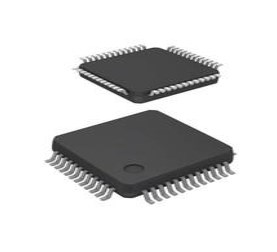 STM32F303CCT6 Microcontroller: 72MHz, 48-LQFP, Pinout and Datasheet
STM32F303CCT6 Microcontroller: 72MHz, 48-LQFP, Pinout and Datasheet20 January 20221481
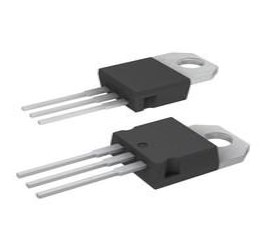 L78S05CV: 35V, Heatsink, Pinout and Datasheet
L78S05CV: 35V, Heatsink, Pinout and Datasheet24 February 20221124
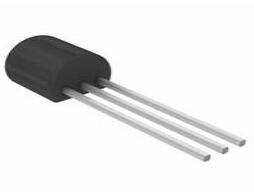 MPSA18 Low Noise Transistor: Datasheet pdf, Pinout and Substitute
MPSA18 Low Noise Transistor: Datasheet pdf, Pinout and Substitute15 November 20212805
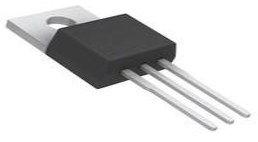 LM7806 Regulator: Pinout, Advantage and Datasheet
LM7806 Regulator: Pinout, Advantage and Datasheet28 August 20216277
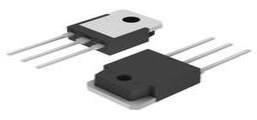 2SD1047 Transistor: Circuit, Pinout, and Datasheet
2SD1047 Transistor: Circuit, Pinout, and Datasheet25 November 20216966
 Where and How Can We Use the PIC16F628 8-Bit CMOS Microcontroller?
Where and How Can We Use the PIC16F628 8-Bit CMOS Microcontroller?12 April 20222514
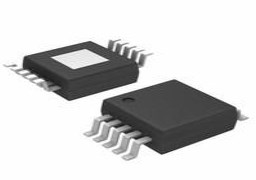 PCA9615DP IC-Bus Buffer: Pinout, Datasheet and Advantages
PCA9615DP IC-Bus Buffer: Pinout, Datasheet and Advantages13 September 20212161
 Introduction to RAID (Redundant Arrays of Independent Disks)
Introduction to RAID (Redundant Arrays of Independent Disks)01 July 20218173
 Semiconductor Industry Techniques Revolutionize Battery Manufacturing
Semiconductor Industry Techniques Revolutionize Battery Manufacturing06 November 2023530
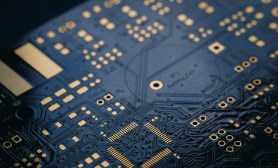 How to treat 5G?
How to treat 5G?23 October 20212027
 Will MicroLED replace LCD and OLED?
Will MicroLED replace LCD and OLED?31 August 20213047
 What is a Digital-to-analog Converter?
What is a Digital-to-analog Converter?04 June 20243352
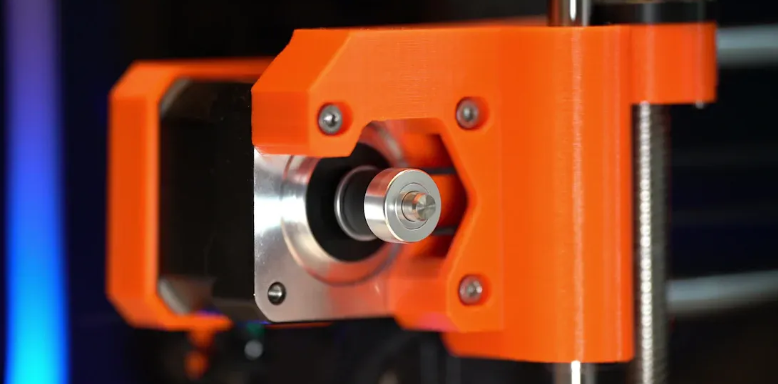 How to Select Stepper Motor Controllers for Precision
How to Select Stepper Motor Controllers for Precision19 July 2025489
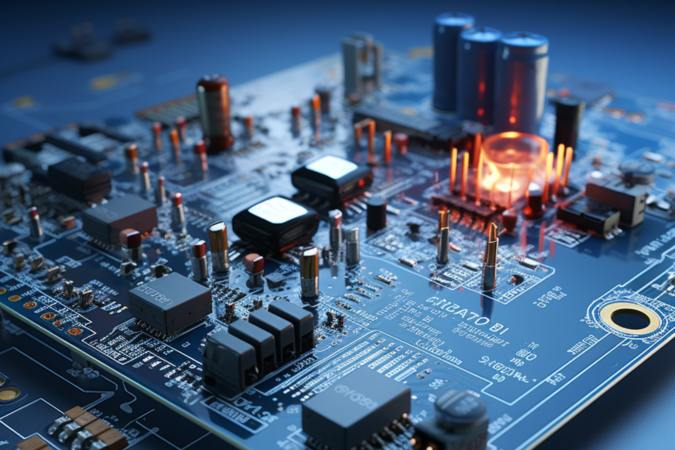 Power of Dual and Isomorphic Principles in Power Electronics
Power of Dual and Isomorphic Principles in Power Electronics24 July 20232686
 How to Use an External Hard Drive?
How to Use an External Hard Drive?24 June 20218726
STMicroelectronics
In Stock: 8484
United States
China
Canada
Japan
Russia
Germany
United Kingdom
Singapore
Italy
Hong Kong(China)
Taiwan(China)
France
Korea
Mexico
Netherlands
Malaysia
Austria
Spain
Switzerland
Poland
Thailand
Vietnam
India
United Arab Emirates
Afghanistan
Åland Islands
Albania
Algeria
American Samoa
Andorra
Angola
Anguilla
Antigua & Barbuda
Argentina
Armenia
Aruba
Australia
Azerbaijan
Bahamas
Bahrain
Bangladesh
Barbados
Belarus
Belgium
Belize
Benin
Bermuda
Bhutan
Bolivia
Bonaire, Sint Eustatius and Saba
Bosnia & Herzegovina
Botswana
Brazil
British Indian Ocean Territory
British Virgin Islands
Brunei
Bulgaria
Burkina Faso
Burundi
Cabo Verde
Cambodia
Cameroon
Cayman Islands
Central African Republic
Chad
Chile
Christmas Island
Cocos (Keeling) Islands
Colombia
Comoros
Congo
Congo (DRC)
Cook Islands
Costa Rica
Côte d’Ivoire
Croatia
Cuba
Curaçao
Cyprus
Czechia
Denmark
Djibouti
Dominica
Dominican Republic
Ecuador
Egypt
El Salvador
Equatorial Guinea
Eritrea
Estonia
Eswatini
Ethiopia
Falkland Islands
Faroe Islands
Fiji
Finland
French Guiana
French Polynesia
Gabon
Gambia
Georgia
Ghana
Gibraltar
Greece
Greenland
Grenada
Guadeloupe
Guam
Guatemala
Guernsey
Guinea
Guinea-Bissau
Guyana
Haiti
Honduras
Hungary
Iceland
Indonesia
Iran
Iraq
Ireland
Isle of Man
Israel
Jamaica
Jersey
Jordan
Kazakhstan
Kenya
Kiribati
Kosovo
Kuwait
Kyrgyzstan
Laos
Latvia
Lebanon
Lesotho
Liberia
Libya
Liechtenstein
Lithuania
Luxembourg
Macao(China)
Madagascar
Malawi
Maldives
Mali
Malta
Marshall Islands
Martinique
Mauritania
Mauritius
Mayotte
Micronesia
Moldova
Monaco
Mongolia
Montenegro
Montserrat
Morocco
Mozambique
Myanmar
Namibia
Nauru
Nepal
New Caledonia
New Zealand
Nicaragua
Niger
Nigeria
Niue
Norfolk Island
North Korea
North Macedonia
Northern Mariana Islands
Norway
Oman
Pakistan
Palau
Palestinian Authority
Panama
Papua New Guinea
Paraguay
Peru
Philippines
Pitcairn Islands
Portugal
Puerto Rico
Qatar
Réunion
Romania
Rwanda
Samoa
San Marino
São Tomé & Príncipe
Saudi Arabia
Senegal
Serbia
Seychelles
Sierra Leone
Sint Maarten
Slovakia
Slovenia
Solomon Islands
Somalia
South Africa
South Sudan
Sri Lanka
St Helena, Ascension, Tristan da Cunha
St. Barthélemy
St. Kitts & Nevis
St. Lucia
St. Martin
St. Pierre & Miquelon
St. Vincent & Grenadines
Sudan
Suriname
Svalbard & Jan Mayen
Sweden
Syria
Tajikistan
Tanzania
Timor-Leste
Togo
Tokelau
Tonga
Trinidad & Tobago
Tunisia
Turkey
Turkmenistan
Turks & Caicos Islands
Tuvalu
U.S. Outlying Islands
U.S. Virgin Islands
Uganda
Ukraine
Uruguay
Uzbekistan
Vanuatu
Vatican City
Venezuela
Wallis & Futuna
Yemen
Zambia
Zimbabwe









